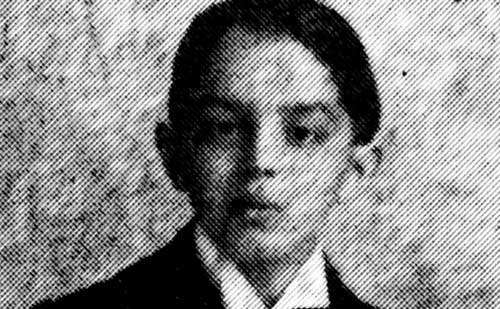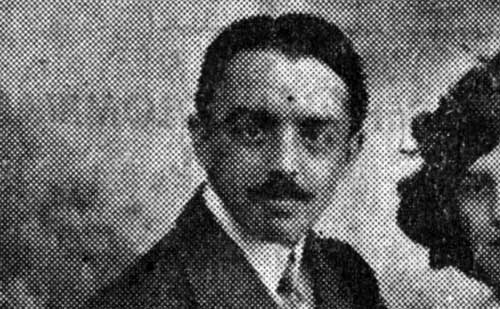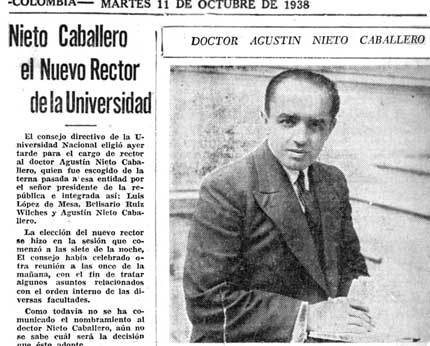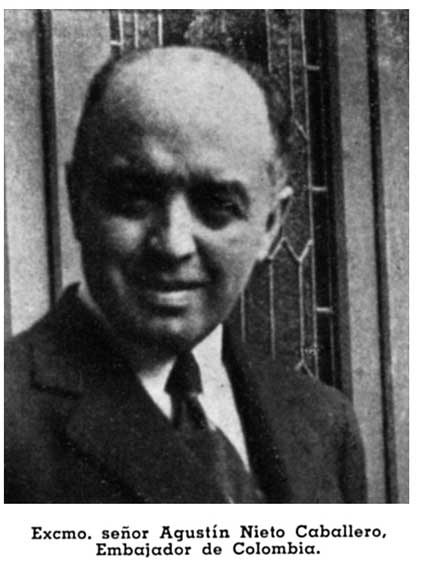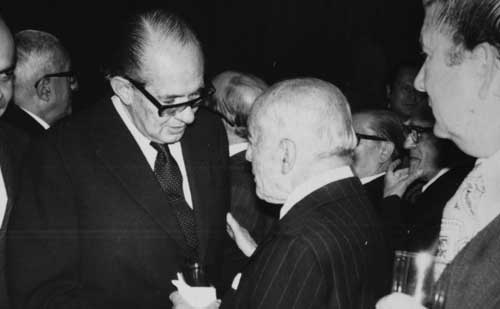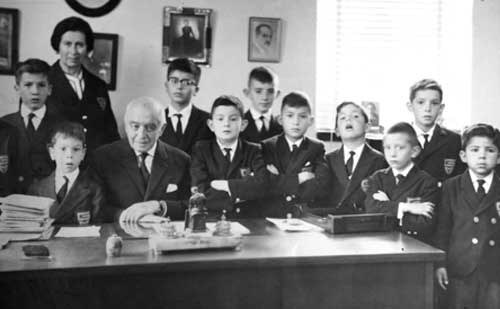He was born in the cold savannah of Bogotá on August 17, 1889. Mister Agustín began his life in a city that at the time, celebrated the installation of the first railway line that today is known as “El Tren de la Sabana” [the train of the savannah], a transport service that denoted a journey towards the modernization of the city dwellers, but that over the years started disappearing, while the legacy of Mister Agustín Nieto Caballero still exists in the classrooms and facilities of educational institutions in Colombia.
Nieto Caballero, was a recognized leader who changed the history of education in the country, thanks to his commitment to pedagogy, he was one of the greatest promoters of the New Education in Colombia. His great ideal was to educate Colombian youth under exclusive parameters based on the discipline, trust, artistic and intellectual development of the students. Its name is not only linked to the pedagogical tradition of public education in Colombia, but also closely associated to the history and present of the Gimnasio Moderno.
Since a very young age, Mister Agustín’s life was marked by the tragedy due to the early death of his parents Agustín Nieto and Paulina Caballero. However, despite the loss of his parents, he had the opportunity to be raised by his uncles who took care to provide the best education for both him and his brothers. This is how history shows that he attended the most outstanding schools in Bogotá, such as the “Hermanos Cristianos”, the “Colegio Americano”, “Araujo & Ramírez” and the “Liceo Mercantil”.
Due to the difficulty to obtain a high quality education in Colombia, worried about his professional future, his uncles decided to send him to Europe in order for him to start his university life there. Thus, Nieto Caballero studied at the Law School in Paris where he obtained a Bachelor of Law degree.
Four years later, he continued his studies in Philosophy and Educational Sciences at the historic Sorbonne University in Paris and at the “Collège de France”. Subsequently, he decided to take a trip to “The Big Apple”, where he studied Biology and Psychology, at the Teachers College of Columbia University, one of the most recognized academic institutions in New York City.
In 1910, when he was taking his courses in Europe, he lived closely the reflections and reforms that arose around traditional education based on punishment; In addition, he had direct approaches with new forms of education and great pedagogues, such as Dr. Ovide Decroly. Hence, encouraged by the great love he felt for Colombia and his desire to find the common good, he took everything he had learned as an inspiration and returned to his country, with the purpose of modifying the existing education model.
Initially, he tried to create a state school where he would begin to put these new modalities into practice, but due to the impossibilities, beyond his control, he decided to form a private institution that would become the “Escuela Nueva de Sur América: Gimnasio Moderno”
Despite the adversities, religious intolerance and lack of teachers who understood these new educational ideas, Mister Agustín Nieto Caballero founded the “Gimnasio” in 1914 and launched educational mechanisms such as school excursions, manual works, the discipline of trust and active teaching methods, breaking with the traditional scheme, but fulfilling its pedagogical ideal:
“Education implies the comprehensive formation of the individual: heart, brain, muscles; those are phases of the same problem. Hence the statistics tell us nothing when they refer to the number of schools. Only quality can give us a standard. You need to know if the school has air, electricity, water, and hygienic guarantees. Otherwise, it is more educational and more human not to go to it. It is important to know if there is a teacher there, a foreman. Nor is it educational or human to put fragile creatures under the control of ignorance and awkwardness.”
Despite the fact that the foundation of this school demanded great financial expenses and it was difficult to form a founding support group, this pedagogical leader did not give up until he saw his dream come true: to form a pedagogical institution where instruction could not be independent of the educational element, maintaining the motto: “Educate rather than instructing”.
And likewise, his name was chosen as a commitment to maintain the New Education model: “We called it “Gimnasio” [gym] thinking of the activity of the body and spirit; we added “Moderno” [modern], to feel obliged to keep ourselves in constant renewal. That name is certainly a commitment.”
In 1915, Mister Agustín married Adelaida Cano and together with her, he dedicated his life to working for the school and extensively touring the main countries of Europe and America where he was able to thoroughly study the whole new trend in terms of education and establish close friendships with great contemporary educators, such as John Dewey, Maria Montessori and Ovide Declory.
However, his concern for Colombia made him not to focus all his actions on a single sector of society, since by creating the Gimnasio Moderno, he collaborated simultaneously in national educational reforms; organized the School Support, created in 1915, with the aim of ensuring breakfast and giving clothes to low-income children attending public schools, as he considered that it was impossible to teach those who are hungry and cold, “and once assured the material part, you can enter the intelligence, the corporeal is a means and not an end”.

In 1928 she founded the Gimnasio Femenino, in order to contribute to a change in the scenario of women’s education in Colombia. And also, as the first pedagogical contribution to the city, he dedicated himself to create libraries that would have historical and methodological material about science and teaching.
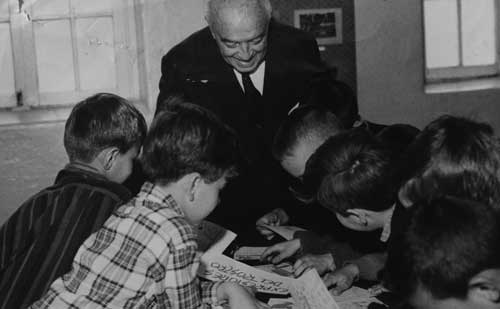
He joined the Ministry of Education in 1931 and represented Colombia in the League of Nations and in different international conferences on Education. In 1932, he held the position of General Director of Education and developed the work of National Inspector of Education, where he had the opportunity to tour the entire country knowing first-hand the situation of the different schools, and he was also able to dialogue with teachers and students.
This position was one of the most important and enriching ones for Mister Agustín, since he considered that the inspector was that person who claimed to realize about the spiritual and moral environment of the institutions, but his visit should never be that of a police officer who goes to carry out an investigation, but that of a friend whose company is always pleasant to share, since it was not a question of self-restraint but of stimulating, instead of stopping, he helps to advance.
Thus, he dedicated 60 years of his civic life in Colombia to the Gimnasio and to educational and social concerns, guided by his educational spirit and his dream of transforming Colombian society, he collaborated intensely in programs for low-income children, as were the Holiday Colonies and the introduction of Youth Red Cross programs in the Gimnasio Moderno, all of that in order to “serve”.
His recognition as an educator and his arduous social work, later led him to become the Rector of the Universidad Nacional de Colombia, from 1938 to 1941; period in which he put great efforts to important buildings within the university campus and where he was able to conclude some of his other pedagogical initiatives:
“Our aspiration would be to see the University become the house of the Colombian spirit, the home of culture, homeland, and the school of citizenship. We would like the University not only to be the factory of more or less expert professionals, but also a research laboratory… A university that is a living encyclopedia of knowledge, and a synthesis of the spiritual yearnings of the nation, respectful of tradition and inspired by the reality of the moment … Behold … our university mission: to train capable men, men at the height of the task to be carried out, courageous men, healthy in soul and body, prepared in technique and with the will and generous spirit to carry out the arduous tasks that will request national efforts.”.
Speech when receiving the position of Rector.
At the end of his career at the Universidad Nacional, he again represented his country, occupying during 1942 and 1943, the position of Colombian ambassador to Chile, and thus, continued for some years giving lectures and classes in different cities in Europe and America, until he was named Main Member of the Higher Council of Education in 1947, a group in which he fought to give unity to the whole of Colombian education, always emphasizing the importance of being in contact with international education organizations and maintaining the idea that there was no objective of inventing what has already been invented, nor was it to bring nationalism to the point of wanting to solve all problems.
His great steps in education and his dedication, led him to become a pedagogical leader, recognized nationally and internationally. At the end of the 90’s, he was already the main guest to represent Colombia in international conferences and congresses, mainly organized by UNESCO.
In January 1955, he participated as an honorary guest of the Pan American Union, in the Second Teaching seminar, held in Santiago de Chile; and in 1958, he joined the Intergovernmental Committee for the study of Primary Education in Latin America as Delegate of Colombia, where he was appointed as its president.
The assessment of his work was constant, in 1964, on the occasion of the fiftieth anniversary of the Gimnasio Moderno, the President of the Republic, Guillermo León Valencia, conferred to him the decoration of The Order of Boyacá, in the Degree of Great Officer and he traveled to Los Angeles, as a guest of honor of the University of California, to participate as an active member of the Western Hemisphere Conference on Comparative Education.
Some years later, the government granted him the civil order “Antonio Nariño”, in the category of Granadino; He was appointed Corresponding Member of the Colombian Academy of History; and in 1973, he received the National Order “Miguel Antonio Caro & Rufino cuervo” in the degree of Grand Cross, granted by the President of the Republic, Misael Pastrana.
Finally, Agustín Nieto Caballero passed away in Bogotá, on the 3rd of November 1975; Despite his death, he left a legacy of teachings to the entire society, his contributions were not only pedagogical, but also the reflection of a life of work and goals accomplished, his jovial and fighting attitude represents the results of a work carried out with effort, dedication and passion; He was not afraid of death nor old age, and his interest in Colombia and his hope of achieving a social transformation made him one of the most important figures in the history of education in our country.
The Gimnasio Moderno created in his honor the MEDAL OF MERIT “AGUSTIN NIETO CABALLERO”, destined to exalt the services that individuals or entities, national and foreign, have provided to education in Colombia. In addition, it fulfills his dream of staying where there will always be youth and where he came true his great ideals, therefore, he was buried in the gardens of the Gimnasio Moderno, where he is constantly visited by the children he loved so much and the pigeons that he cared so much. In that place we find his phrase “Educate rather than instructing.”
After his death, the country continued to remember and celebrate the life of this great pedagogue. In February 1976, and as a posthumous tribute, the President of the Republic, Alfonso Lopez Michelsen, a former student of the Gimnasio Moderno, inaugurated the “Agustín Nieto Caballero” National Lyceum, with a capacity for 3,600 students.
On March 15, 1979, President Julio Cesar Turbay Ayala, praised the Medal of Merit Decoration, giving it a national character, and created, by Decree No. 1039, the GREAT MEDAL “AGUSTÍN NIETO CABALLERO”, named in this way as example and goal of youth and Colombian teachers.
On the other hand, throughout his life he received several decorations for his published works, which have a meticulous and well elaborated, historical, critical and pedagogical material.
His published works were:
The National Education
Moneys for Education
Heading to culture
The teachers
The Second Teaching and Education Reforms
Travel Chronicles
Light Chronicles
A school
Words to Youth
After his death it was published:
School and Life
In Memoriam


